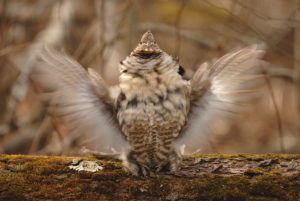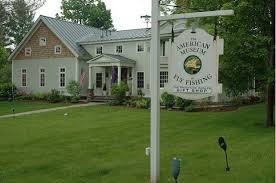The Duck and Regular Canada Goose hunting seasons open tomorrow in the Berkshires. The daily bag limit for ducks is 6 with a possession limit of 18. For geese, the daily bag limit is 3 and possession limit is 9. (Remember, the 15 daily bag limit for geese only applies to the early goose hunting season which ended on September 21).
There is a myriad of regulations which apply to duck hunting. For example, note the daily bag limits: The daily bag may contain no more than 6 ducks, and no more than 4 of any species, not additionally restricted; only 2 black ducks, 4 mallards of which only 2 may be females, 3 wood ducks, etc. Waterfowl hunters need a HIP number, State and Federal stamps, must use non-toxic shot, etc., etc. Hunters really need to refer to the 2018-2019 Migratory Game Bird regulations.
The upland game (ring-necked pheasants, ruffed grouse and quail), cottontail rabbit and snowshoe hare hunting seasons open next Saturday, October 13.
About 40,000 ring-necked pheasants will be stocked in the Commonwealth this fall and we can assume that about 8,000 of them will be stocked in the Western District. To get a complete listing of the stocking locations, click onto the MassWildlife web site and then onto “Pheasant Stocked Areas”. Not only are the stocking locations listed but also the frequency of stocking.”
Also, a couple hundred additional pheasants, which were raised by the Lee Sportsmen’s Association during the year, will be stocked onto certain public lands.
Really, upland game and rabbit hunting is all about the dogs. How they point, retrieve or hold the scent is a source of pride to the hunter. Now’s our chance to see if all of the training, veterinarian expenses, license fees, dog food expenses, etc. of our bird dogs and beagles will pay off. Hopefully, we have been able to get them into top physical shape, just like us.
If they don’t perform to our expectations, that’s ok. They will still be our lovable best friends who simply adore us.
Hunters should refer to the Massachusetts Guide to Hunting, Fishing and Trapping laws to determine season dates, daily bags, season limits, etc. I would like to reiterate one regulation: No person shall hunt during the pheasant or quail season on Wildlife Management Areas (WMA) where pheasant or quail are stocked without wearing a blaze orange cap or hat except while night hunting for raccoons or opossums or while hunting waterfowl from within a blind.”
My recommendation is to wear blaze orange anywhere that you are hunting pheasants, grouse, woodcock or bunnies, not just on a WMA. Also, if hunting waterfowl from a blind, I would recommend wearing a blaze orange hat while going to or leaving the blinds.
I also recommend that non-hunters (hikers, bird watchers, mountain bikers, mushroom seekers, etc.) wear a blaze orange hat while on WMA lands and any forests or lands where hunting is permitted. Don’t forget that cottontail rabbit and snowshoe hare hunters are out there, too, and many of them hunt in our state forests.
Incidentally, the coyote hunting season also opens on October 13.
Here’s hoping you have a safe and enjoyable hunting season, and be mindful of the deer ticks.
Help MassWildlife by recording your wildlife observations while hunting
Massachusetts hunters spend a significant amount of time in the woods observing wildlife of all kinds. These observations can provide wildlife biologists with a tremendous amount of information to better understand wildlife distribution and abundance across the Commonwealth. If you are an archery deer hunter or a game bird hunter, MassWildlife asks that you consider keeping a hunting log on all the days you hunt this season.
If you complete and submit either an archery deer hunting log or a game bird hunting log before December 14, you will be entered into a drawing. Prizes include 1 stainless steel tabletop gas grill, donated by Cabela’s, 10 blaze orange MassWildlife caps, and 10 one-year subscriptions to Massachusetts Wildlife magazine. Winners will be randomly selected and notified in late December. If you complete both types of logs, your name will be entered twice.
Archery Deer Hunting Season Log: If you are an archery deer hunter in Massachusetts, keep a daily log of your hunting activities and observations of wildlife during the archery deer season.. Because archery hunters are usually very stealthy and camouflaged, you are uniquely suited to record valuable observations of wildlife including deer, wild turkey, black bear, coyote, and other species not commonly observed.
Game Bird Hunting Season Log: If you are a game bird hunter in Massachusetts, keep a daily log of your hunting activities and observations of game birds while hunting bobwhite quail, pheasant, woodcock, or grouse. These observations will provide MassWildlife biologists with information on game bird populations across the state and allow them to evaluate hunter efforts of various upland game bird species. MassWildlife seeks to maintain healthy game bird populations while ensuring quality hunting experiences for both wild and stocked birds across the Commonwealth.
Log Results From 2017
Archery deer hunters submitted 171 hunting logs resulting in over 9,000 hours of hunting time logged. Logs were received from hunters in every Wildlife Management Zone (WMZ); however, zones 9, 10 and 11 accounted for the most logged hours. Turkey, deer, and coyote were the most common species observed statewide. Bucks and does were observed in every WMZ, while turkeys were observed in zones 1-11; black bears were observed in 7 of the 15 zones.
Hunting logs were received from 42 gamebird hunters in 2017 resulting in 975 hours of recorded game bird hunting. Submitted hunting logs were received from WMZs 2-12 and Nantucket (WMZ 14).
Fall trout stocking has begun
Mass DFW has already stocked several of our local waters. To find out when and where the stockings occurred and the kinds of trout stocked, click onto the MassWildlife web site (www.mass.gov/service-details/trout-stocking-report).
There was some conjecture as to whether the East Branch of the Westfield River will be stocked this fall. According to Andrew Madden, DFW Western District Supervisor, barring any unforeseen event such as flooding or accessibility issues, fall stocking of the East Branch is planned.
Happy 50th Birthday to the American Museum of Fly Fishing
The AMFF, which is dedicated to preserving the rich heritage of fly fishing was established in 1968 in Manchester, Vermont, by a group of passionate and enthusiastic anglers who believed that the history of angling was an important part of American culture and tradition. The Museum was created to serve as an institution to research, preserve, and interpret the treasures of angling history.
Today, the Museum serves as a repository for and conservator to the world’s largest collection of angling and angling-related items, numbering in the thousands. Its collections and exhibits thoroughly document the evolution of fly fishing as a sport, art form, craft, and industry in the United States and abroad, dating as far back as the sixteenth century. Rods, reels, flies, tackle, art, photographs, manuscripts, and books (including its 7,000 volume Gardner L. Grant Library) form the Museum’s permanent collection.
The museum, which is located next to Orvis in Manchester, VT is one of my favorite places to visit. I always look forward to receiving their quarterly journal, entitled The American Fly Fisher which is provided to its members. Check them out on www.amff.org.
